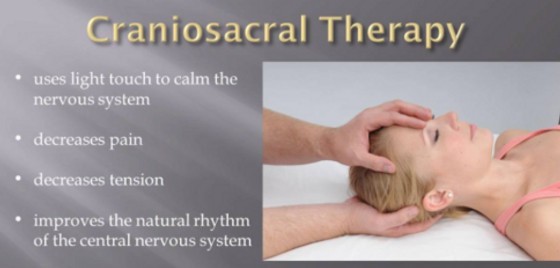Understanding Craniosacral Therapy: A Parent’s Guide
Hello there, wonderful parents! Are you curious about alternative therapies that may support your child’s well-being? If so, you’ve probably heard about craniosacral therapy (CST) and wondered, “What exactly is it?” Well, buckle up! You are about to embark on a journey of discovery into the remarkable world of CST—a therapy that could offer new avenues for enhancing your child’s health and happiness.
What is Craniosacral Therapy?
Craniosacral Therapy is a form of bodywork that embraces a gentle, hands-on approach aimed at enhancing the body’s natural capacity for healing. It’s based on a fascinating concept: the body has its own rhythms, much like the ocean’s tides, which can be felt and supported for optimal health. ?
But let’s get a bit scientific here! CST focuses on the craniosacral system, which encompasses the membranes and fluid that surround and protect the brain and spinal cord. Our skilled therapists use a featherlight touch – we’re talking about the weight of a nickel – to listen to these subtle rhythms and pinpoint areas where the flow could be enhanced.
CST Origins and Principles
The origins of craniosacral therapy trace back to the early 1900s, when Dr. William Sutherland, an osteopath, made the astute observation that the cranial bones exhibit slight movements—a concept that was quite revolutionary at the time! Fast forward to the 1970s, and Dr. John Upledger further developed CST into what it is today.
Through careful palpation, a CST practitioner aims to release restrictions in the craniosacral system to improve the functioning of the central nervous system. This, in turn, helps the body correct imbalances and eliminate stress, leading to a myriad of potential benefits for children and adults alike:
- Promotion of relaxation and stress relief
- Support of healthy brain and spinal cord function
- Improvement in sleep patterns
- Enhancement of the body’s resilience to disease
- And much, much more!
Is Craniosacral Therapy Safe for Children?
One of the most common questions we hear from parents is whether CST is safe for kids. We get it—you want what’s best for your little ones, and their safety is your top priority. The good news is that CST is known for its gentle, non-invasive approach, making it suitable for children and even babies!
But let’s not stop there! It’s not just about safety; it’s about benefits. CST has shown promise in helping little ones with a range of conditions. From colic and teething discomforts in babies to attention and sensory issues in older children, CST can be a comforting and nurturing experience.
When to Consider Craniosacral Therapy for Your Child
As a parent, you are finely attuned to your child’s needs and are always looking for ways to support their development and well-being. Craniosacral therapy might just be the complement you’re searching for. Here are some scenarios where CST could be particularly helpful:
- Your child experiences regular headaches or migraines
- They have trouble relaxing or suffer from anxiety
- They’re coping with motor-coordination impairments
- They’re recovering from a traumatic injury or birth trauma
- They exhibit behavioral or attention-deficit problems
Now, aren’t these some compelling reasons to explore CST as an option? But wait, there’s more! In our following sections, we’ll dive deeper into how CST sessions are conducted, the intricacies of the therapist’s approach, and share heartwarming success stories of children who have been touched by the magic of craniosacral therapy. Stay tuned, because the journey through the craniosacral realm is filled with hope, healing, and plenty of gentle, loving care that could make a world of difference for your child!

5 Things to Know When Preparing for Craniosacral Therapy Sessions
Navigating the world of alternative therapies can often feel like wandering through a maze with a blindfold, but fear not! Here are five golden nuggets of info that will equip you with the knowledge you need before your child’s first Craniosacral Therapy session:
1. Choosing the Right Practitioner
Selecting a practitioner is like picking out the perfect pumpkin in a patch—they all look similar, but you know there’s one that is just right. Ensure that the therapist is qualified with proper certification in CST, ideally with experience working with children. Check for reviews or ask for referrals to find a professional who resonates with your family’s needs.
2. Understanding the Session Process
A typical CST session for a child is akin to a pie baking in the oven; it’s done gently and with patience. Sessions can last anywhere from 30 to 50 minutes, depending on your child’s age and responsiveness. During this time, your child may lie on a treatment table or sometimes engage in quiet play while the therapist applies a gentle touch to various areas of the body.
3. Preparing Your Child
Chatting with your little one about the therapy can be as delightful as storytime. Explain to your child that CST is a fun way to help their body feel good. Make sure they know that they can communicate with the therapist throughout the session if they feel uncomfortable or just want to share their favorite ice cream flavor.
4. What to Wear
Dress your child in comfortable clothes, the kind they’d wear for a lazy Sunday morning cuddle. Soft, stretchy fabrics are the way to go, making it easy for the therapist to work through the clothing and for your child to relax completely.
5. After the Session Care
Think of post-session care as the cool-down after a playful day at the park. It’s possible that your child might feel various emotions, seem extra sleepy, or exhibit a surge in energy. These are all normal responses as their body adjusts. Keep the rest of the day’s schedule light, encourage fluids, and provide a comfortable space for them to rest or be active, depending on their energy levels.
So there we have it, the top five things to keep in mind as you prepare to delve into the serene, soothing waters of Craniosacral Therapy. It’s about trust, a touch of preparation, and a sprinkle of understanding, all mixed together to support your child’s path towards balance, healing, and well-being.
Remember, lovely parents, that each journey is unique, like every snowflake that twirls down from the winter sky. It’s the same with CST; some children might show immediate improvements, while for others, it may take several sessions. Patience, as they say, is the compass that guides us through the parenting adventure.
Are you ready to take the next step? Reach out to local CST practitioners, join parent groups to hear firsthand experiences, and most importantly, trust your instincts. You know your child best, and together with CST, you’re opening up an exciting chapter of their wellness story. Imagine, in the not-too-distant future, you may be the one sharing your success tales with other parents, spreading the word about the transformative effects of Craniosacral Therapy. Now wouldn’t that be something!
Keep your eyes peeled for our upcoming pieces, where we’ll explore specific case studies, delve into frequently asked questions, and offer a wealth of resources to further your understanding of Craniosacral Therapy. Together, let’s embrace the possibilities for a healthier, happier future for our children. A world of gentle healing awaits!
See more great Things to Do with Kids in New Zealand here. For more information see here
Disclaimer
The articles available via our website provide general information only and we strongly urge readers to exercise caution and conduct their own thorough research and fact-checking. The information presented should not be taken as absolute truth, and, to the maximum extent permitted by law, we will not be held liable for any inaccuracies or errors in the content. It is essential for individuals to independently verify and validate the information before making any decisions or taking any actions based on the articles.




